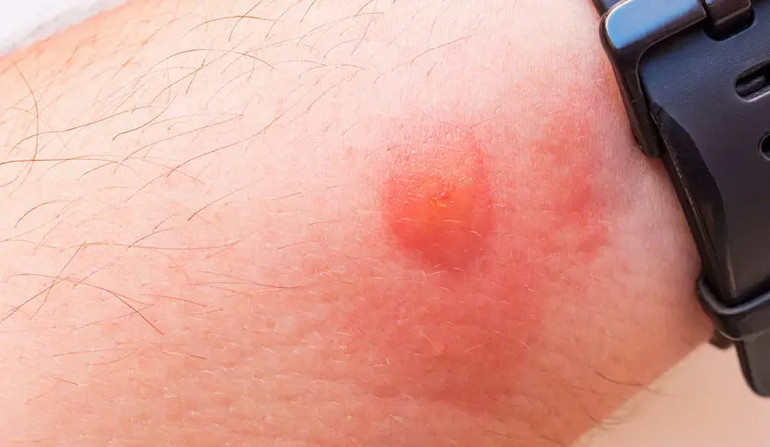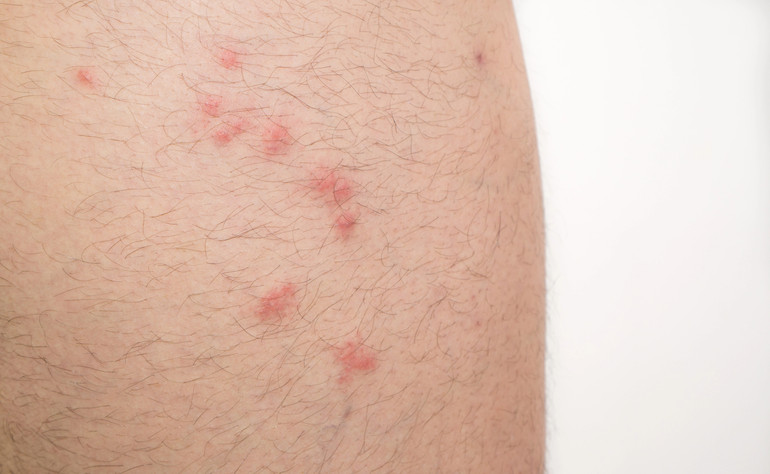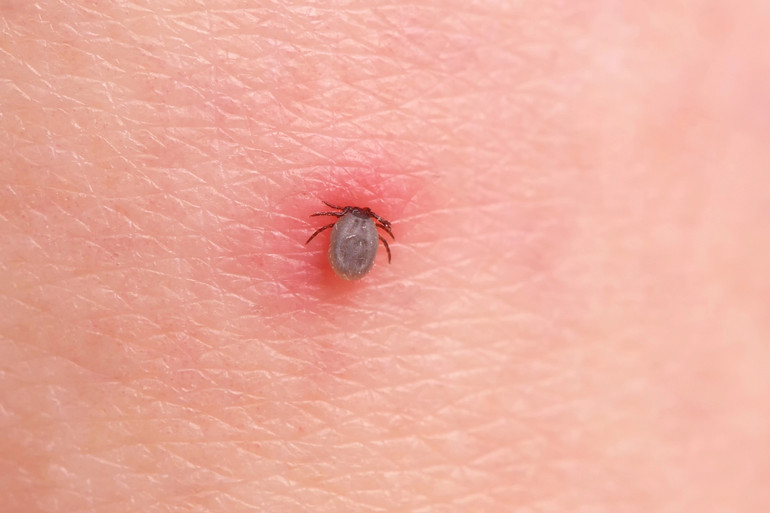How to recognize insect bites and what to do with them

With the onset of heat, Ukrainians spend more time in nature – around the greens, everything blooms, birds sing. But during such rest, people should be especially careful and vigilant, because in the spring and summer season insects are activated.
The bites of some of them not only provoke itching, but can also pose a health threat.
How to recognize the most common insect bites and what to do with them – tell in Cleveland Clinic and Medical News Today.
How to recognize insect bites
« Determine who has bitten you is not always easy, but sometimes characteristic signs can give a hint. Understanding this is important for choosing the right treatment, » – explained Cleveland Clinic Ambulance Doctor Christopher Batszoli.
Mosquito bites
Bites can be isolated or appear in groups
Photo: Dimid_86/Depositphotos
They look like tubercles on the skin, sometimes with a dark point in the center (this is the bite itself). It can be one or more. The human immune system often responds to them with edema and itching.
Refrain from combing the wound – this can lead to infection. Instead, apply a cold compress or ice to the site to reduce swelling and pain. If it does not go away for a long time, take an oral antihistamine.
Some mosquitoes can tolerate dangerous diseases – Denge, Zik, Malaria, Western Nile virus and more. The symptoms of these diseases appear not immediately after the bite, but later – usually within a week or two.
Therefore, if you have fever, rash, body pain – be sure to consult your doctor.
Gedzi bites

At the site of Gedz’s bite, there is often severe itching, redness, and sometimes slight bleeding.
Photo: Cleveland Clinic
Unlike some beetles that you may not even suspect bites, gedzi bites are usually painful. The places of their bites are usually very itchy, there is a redness around them and may be some blood.
Here are some recommendations to reduce Gedz’s bite symptoms:
- clean the affected area with warm soap water using a clean cloth or cotton swab;
- Attach a cold compress or ice pack wrapped in a fabric will help reduce pain and swelling;
- Take oral antihistamines – they will help reduce itching;
- Do not scratch the bite – it can worsen the condition of the wound and increase the risk of infection.
Vinegar and soda with Gedzi bites, as a rule, do not give effect.
Although Gedz’s bite is painful, it rarely leads to serious complications. However, in some cases, a person may have a severe allergic reaction that will require medical care.
Bug bugs

Most often bug bugs appear on areas of the body that touches bedding
Photo: Alexx60/Depositphotos
Bedbug bites leave itchy bubbles on the skin, which are usually arranged in a row of three or more. Most often, they occur on the area that contacts the bed.
In people with a light skin shade, bed bug bites usually look pink or red. In people with darker skin, they can have a purple tint and be less noticeable.
The first step in the treatment of the bite should be to clean the lesion – preferably using soapy water.
If there is severe swelling, inflammation or itching, you should consult your doctor immediately. A pronounced immune reaction can indicate allergies.
Fleas bites

Flea bites usually look like little red spots with a slight swelling that is very itchy
Photo: Saaaaaa/Depositphotos
Often people associate fleas with pets, and this is partly true. Fleas are usually found in shady places, such as under trees or in tall grass, where pets walk.
However, in order to be the victim of the bites of these insects, it is not necessary to be the owner of a dog or a cat. These insects can penetrate the house through any fabric or fur.
Once in the apartment, fleas settle in carpets or furniture, and thanks to the rapid reproduction cycle can quickly turn into a serious problem.
Flea bites usually look like tiny red spots with a slight itchy swelling. If there are several bites, they can be arranged in a row or cluster.
Because fleas are found near the ground, they mostly attack the feet of people.
Usually flea bites do not lead to serious health problems. Because the bites are very small, a person may not even notice them.
However, scratching the bite can lead to a secondary infection. She is evidenced by:
- edema;
- redness or discoloration of the skin;
- fever.
Tick bites

Unlike most insects that bite and disappear quickly, ticks remain attached to a person’s body to full saturation
Photo: Iceberg_dp/Depositphotos
Unlike insects that bite and fly or flee before you have found the lesion, the ticks remain on the body until they are saturated. The tick bite can look like a small solid red dot.
For the most part, people do not notice the moment of the bite, but find the insect when they have got well. And all because the ticks become larger when the victim’s blood is filled.
If you find a tick on your body, you must remove it. But you should not use petroleum jelly or burn it with a lighter. These tick removal methods are ineffective.
Instead, take tweezers with a blunt tip and perform the following steps:
- grasp the tick ticks as close as possible to the skin;
- carefully, evenly pull it up – do not pull or rotate sharply, because then part of the tick (usually the head or its teeth) can remain in the skin;
- Clean the place with a disinfectant or soap water.
If you have successfully and quickly removed the tick, you will probably not have any long -term effects of the bite. But if the ticks have fed with your blood for some time – usually more than 24 hours – there is a risk of infection with the diseases that carry these insects.
To prevent this, consult your doctor.
General Recommendations on Bite Location Care
For the most part, in such cases, no serious or specific therapy is required. Enough:
- rinse the site of soap with water;
- refrain from scratching;
- use aloe vera; apply ice;
- use antihistamines.
However, people who are allergic to insect bites should urgently consult a doctor if you have the following symptoms:
- fever;
- nausea;
- rash or urticaria;
- headache;
- General weakness.







